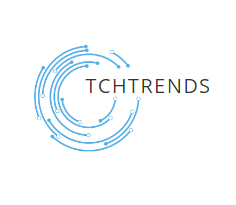Fitness and health have become increasingly important to people worldwide in recent decades. From boutique gyms and yoga studios to big box chains, the variety of options available for maintaining active lifestyles continues expanding robustly each year.
Driving much of this growth is a dedicated network of businesses, trainers, coaches, and more working passionately within the fitness industry.
Organizations seek to honor outstanding contributions each year through various prestigious award programs. Receiving an award in the fitness industry can help present and reward the extraordinary work being achieved while helping to further solidify your brand within the industry.
The only problem is navigating through the fitness industry’s award application process, which can be tricky, and sections wrongly filled. With many worthy applicants vying for a limited number of honors, it is crucial to submit the most robust possible submission package.
This article examines five common errors that fitness professionals would be wise to avoid in pursuing industry recognition.
1. Neglecting to Research Award Criteria and Categories
Knowledge is power when it comes to award applications. While passion and merit are undoubtedly important, not doing homework can negate credentials. Take time to unveil the subtle nuances nested within each award’s criteria, like a well-crafted riddle.
Which award best suits your expertise? Proper research prevents costly missteps. For instance, the fitness industry award has criteria that may vary in categories.
Without understanding how award criteria can vary in their areas of emphasis, there is a risk of applying where your qualifications are not the most decisive match. Research prevents this by allowing you to identify the award(s) whose criteria will best appreciate your unique strengths and merits.
2. Providing Incomplete or Inaccurate Information
Also, judges will look for incomplete or inaccurate information in the application for the award. Information on forms such as qualification, history, referral sources, client/patient outcomes, community involvement, and many more will have to be filled in.
While brevity is a means to respect guidelines, applicants must fully disclose the information presented and give precise but adequate responses. Otherwise, qualified submissions that contain omissions or misrepresentations regarding credentials, impacts on programs, or other pertinent factors run the increased risk of diluting the quality of the submission.
Completing all application components takes time, but it demonstrates a genuine commitment to presenting the most substantial profile for consideration. Wouldn’t you want judges to have a complete understanding of your qualifications rather than uncertainties that could lead to disqualification?
3. Overlooking Visual Presentation
The visual design of an award application holds significant weight with judges. A clean, easy-to-navigate layout creates a positive first impression and allows judges to review materials efficiently. Busy or poorly formatted submissions risk quick dismissal.
Use a simple, professional design with ample white space and 12–14-point font. Include a table of contents and headers to guide readers. Engaging but sparse use of high-quality images can enhance key points if adequately integrated. Consider providing an executive summary if word limits are restricted, including all supporting materials in the main submission.
First impressions matter. Taking time to thoughtfully present credentials in an aesthetically pleasing, reader-friendly way leaves judges with a better perception of your effort and professionalism. Visual design should complement rather than hinder the consideration of an award-worthy candidacy. Avoid careless presentation mistakes that undermine an otherwise strong application.
4. Waiting Until the Last Minute to Submit Your Application
One of the disadvantages of using last-split scheduling is that it does not allow time and effort to prepare an all-inclusive package application, including strategy, and supporting documentation.
Rushing through responses or hurriedly gathering materials to meet deadlines risks detrimental oversights and a lower quality overall submission. Judges readily notice when an application appears hastily assembled rather than thoughtfully constructed.
So, beginning the process early allows for multiple drafts, input from colleagues, and fine-tuning based on practice evaluations. It also provides contingency time for unexpected delays or technical issues close to cut-off points.
5. Relying On Generic Cited Achievements
It is tempting for award applicants to broadly list accomplishments without specificity when highlighting their qualifications and impact. However, judges see many submissions and can easily discern generic from genuinely exceptional achievements. Vague citations of increases in client outcomes, program numbers, or other metrics without context do not truly showcase applicants’ unique strengths or influence.
Candidates must qualitatively demonstrate how cited achievements illustrate innovative, dedicated, or pioneering contributions to the fitness industry specifically relevant to award categories. Weaving in case examples, data comparisons or anecdotes that uniquely color achievements prevent responses from blending indistinctly among competitors.
Abstract achievements alone only authentically differentiate one’s application with proof of how results remarkably moved the needle. Thoroughly substantiating quantifiable wins with qualitative depth optimizes how review panels comprehend applicants’ distinct values and merits relative to standards.
Final Thoughts
Want award recognition? Avoid mistakes by thoroughly researching criteria and guidelines. Your application must impress judges through diligent preparation. Carefully craft compelling materials highlighting achievements within submission rules.
This strategic planning separates you from others, gains evaluators’ notice, and fuels industry growth. The choice is simple – will you blend in or stand out from the rest?
